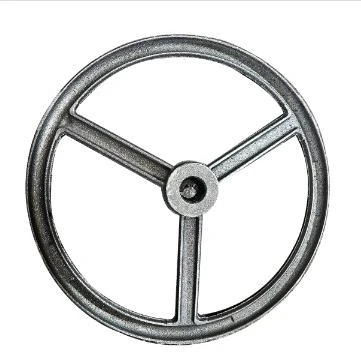ธ.ค. . 12, 2024 10:17 Back to list
melting aluminum for casting
Melting Aluminum for Casting A Comprehensive Guide
Aluminum is one of the most versatile and widely used metals in the world, renowned for its lightweight nature, excellent corrosion resistance, and efficiency in conductivity. These attributes make it a prime choice for various applications, including automotive, aerospace, and consumer goods. However, before aluminum can be molded into intricate forms for these applications, it must first be melted and prepared for casting. In this article, we will explore the process of melting aluminum for casting purposes, including the necessary equipment, variables affecting the melting point, and safety precautions.
Understanding Aluminum Melting
Aluminum has a relatively low melting point compared to other metals, around 660 degrees Celsius (1220 degrees Fahrenheit). This property enables it to be melted with less energy expenditure, making it economically viable for various manufacturing processes. The melting of aluminum generally occurs in two stages phase transformation from solid to liquid and subsequent removal of impurities.
Equipment Required for Melting Aluminum
To melt aluminum effectively, certain equipment is essential
1. Melting Furnace There are various types of furnaces suitable for melting aluminum, including electric resistance furnaces, induction furnaces, and crucible furnaces. Each type has its benefits and drawbacks, depending on the scale of production and the desired quality of the aluminum melt.
2. Crucibles These are containers made from materials that can withstand high temperatures without deforming. Common crucible materials for aluminum include graphite, ceramic, and various alloys designed specifically for high-temperature applications.
3. Safety Gear Personal protective equipment (PPE) is critical when working with molten aluminum. This includes flame-resistant clothing, gloves, face shields, and safety goggles to protect against molten metal splashes and extreme heat.
4. Temperature Control Instruments Accurate temperature measurement is vital. Digital thermometers or pyrometers can monitor the melting process, ensuring that the aluminum reaches the appropriate temperature without overheating.
melting aluminum for casting

Melting Process
1. Preparation Before melting, aluminum scrap or ingots must be cleaned to remove any contaminants—such as oil, grease, or paint—that could affect the quality of the final product.
2. Heating Once the aluminum is ready, it is placed into the melting furnace. The heating process must be gradual to prevent the metal from oxidizing and to minimize the risk of contamination.
3. Degassing While molten, aluminum can absorb gases that may lead to defects in the final casting. A process called degassing involves introducing inert gas (like nitrogen) into the melt or using chemical additives to remove dissolved hydrogen.
4. Alloying If needed, other metals can be added to create specific aluminum alloys, which can enhance properties such as strength, hardness, and corrosion resistance.
5. Pouring Once the aluminum reaches its melting point and is free of impurities, it is poured into pre-prepared molds. The pouring method can vary, ranging from manual pouring for small-scale operations to automated systems for larger productions.
Cooling and Finishing
After pouring, the aluminum molds must be allowed to cool and solidify. The cooling rate can significantly influence the properties of the aluminum casting. Once cooled, the castings can be removed and machined, if necessary, to achieve the desired dimensions and finishes.
Conclusion
The process of melting aluminum for casting is intricate but rewarding, enabling the production of high-quality components with remarkable physical properties. By understanding the equipment needed, following proper procedures, and adhering to safety protocols, manufacturers can ensure they yield efficient and effective aluminum casting processes. Whether in small workshops or large-scale facilities, mastering aluminum melting can unlock a world of possibilities in production and manufacturing.
-
Centrifugally Cast Iron Water Main Pipe | Ductile Iron Solutions
NewsAug.24,2025
-
Durable Cast Steel Concrete Pipe Mold Bottom Rings & Base Trays
NewsAug.23,2025
-
Centrifugally Cast Iron Water Main Pipe for Reliable Mains
NewsAug.22,2025
-
Durable Centrifugally Cast Iron Water Main Pipe
NewsAug.11,2025
-
Centrifugally Cast Iron Water Main Pipes for Reliability
NewsAug.10,2025
-
High-Quality Centrifugally Cast Iron Water Main Pipes
NewsAug.09,2025


